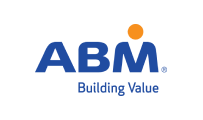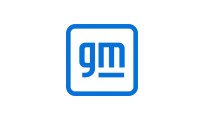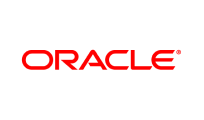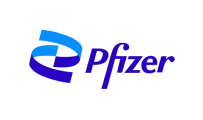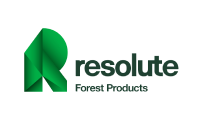New rules, new skills
Canada has tightened the screws on both environmental claims and AI market conduct. In June 2025, the Competition Bureau released final environmental-claims guidelines explaining what evidence you need before you market product or business benefits.
In January 2025, it also summarized AI competition risks, including vertical integration, access to compute/data, and algorithmic pricing. These aren’t abstract updates—they reshape how Canadian teams write claims, set targets, and deploy AI.
CSE’s Canada Sustainability & ESG Course — Cohort 2 was built for this moment. It covers legislation, reporting standards, greenwashing pitfalls, Scope 3, supply chain, and “responsible communication”—with tools you can use right away.
Benefits: Turn compliance into an advantage
- Reduce legal risk by matching each claim to the right proof: testing for product performance and internationally recognized methodology for business/activity claims.
- Protect trust and disclosure quality as companies recalibrate claims under the new regime. Clear methods keep you transparent without “greenhushing.” As Barbara Zvan, President & CEO of the University Pension Plan Ontario, cautions: “Bill C-59 has had unintended consequences, prompting organisations to scale back or withdraw climate disclosures at a time when clear, comparable data is critical.”
- Use AI safely by understanding where competition concerns may arise (pricing, exclusivities, input control) and documenting safeguards.
- Build career value with Canada-specific training on GRI, SASB, TCFD, ISSB/ESRS, net-zero planning, and external assurance.
Practical Steps & Tools (your 30-day plan)
- Inventory claims. Tag each environmental statement as product or business. Map the required evidence and who owns it.
- Create “claim files.” For products, attach adequate and proper testing done before publishing. For business claims, attach the methodology, calculations, and third-party verification when required.
- Harden future-looking claims. Net-zero and 2030 targets must have a concrete, verifiable plan with interim milestones and steps already underway.
- Align standards. Use GRI for reporting structure; pull in SASB/ISSB/ESRS metrics where material; document Scope 3 boundaries and data sources. CSE’s modules walk you through this with exercises.
- Audit AI use. Record where algorithms influence pricing, marketing, or ranking. Assess collusion and vertical-lock-in risks; document controls and monitoring.
- Train your team. C-suite, finance, communications, supply chain, and IR all touch claims. Cohort 2 includes a leadership edition format designed for executives and decision-makers.
Common mistakes to avoid
- Vague claims like “eco-friendly” without scope, boundary, and method. Spell out what, where, and how measured.
- Copying competitor tests. Evidence from “similar products” isn’t testing. Run tests appropriate to the general impression your ad creates.
- Using investor slides as ads. Securities-style disclosures reused in marketing can still trigger deceptive-marketing rules.
Why CSE’s Canadian Program fits now
CSE’s Leadership Edition of the Certified Sustainability (ESG) Practitioner Program addresses the exact pressure points Canadian teams face:
- Module 2: Global & local legislation for sustainability and GHG—connects Canadian rules to global regimes.
- Module 4: Reporting (GRI + other guidelines)—materiality/double materiality, assurance, and communication.
- Module 5: Responsible communication & how to avoid green/blue-washing—operationalizes the Bureau’s guidance.
- Advanced modules: Net Zero, Scope 3, supply-chain sustainability, upcoming legislation—plus sector briefs and optional specialization.
Audience includes ESG directors, CFOs, comms, HR, IR/finance, procurement & supply chain, and C-suite. Expect case studies, exercises, and take-home templates.
Protecting trust and maintaining disclosure quality has become a pressing challenge as companies recalibrate their claims under Canada’s new regulatory regime. Clear and transparent reporting methods are more important than ever, ensuring credibility without falling into the trap of “greenhushing.” As Barbara Zvan, President & CEO of the University Pension Plan Ontario, cautions: “Bill C-59 has had unintended consequences, prompting organisations to scale back or withdraw climate disclosures at a time when clear, comparable data is critical.”
For context on the regulatory environment, see the Bureau’s June 2025 environmental-claims news release and legal analyses; they reinforce why disciplined substantiation and clear language are essential.
FAQs
What is the “environmental claims” guideline in simple terms?
It’s the Bureau’s playbook (June 2025) for deceptive-marketing enforcement on environmental claims: test product claims, and substantiate business claims with internationally recognized methods—before you market.
How do the AI findings affect marketing and pricing?
The Bureau is watching inputs (compute, data), vertical integrations, and algorithmic pricing that could enable tacit collusion or barriers to entry. Document guardrails and reviews.
What will I learn in CSE’s Canadian Program?
Legislation and standards, materiality and reporting, Scope 3 and supply chain, responsible communications to avoid greenwashing, and executive-level strategy—delivered with tools and exercises.
Get Canada-specific training, frameworks, and templates to prove your claims and govern AI use—without slowing growth. Register now or reach us at info@cse-net.org


